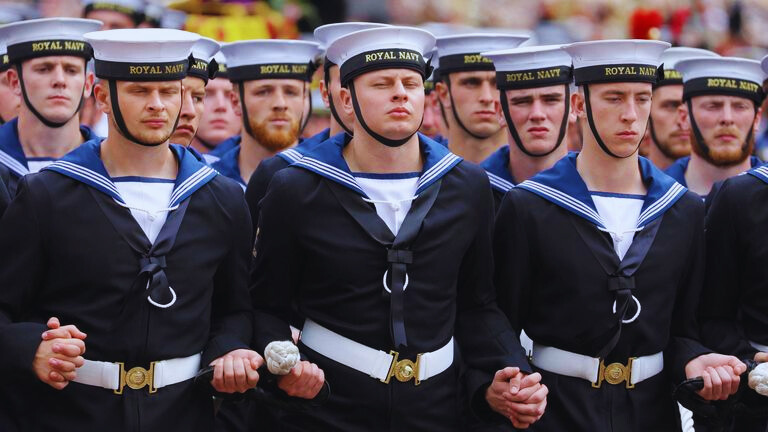In the annals of naval history, few institutions command as much respect and admiration as the Royal Navy. With a legacy spanning centuries, it stands as a symbol of maritime prowess, strategic dominance, and unwavering resolve. This comprehensive article delves into the Navy’s storied past, illustrious present, and promising future. It elucidates its pivotal role in shaping global affairs and safeguarding maritime interests.
Origins and Historical Significance
The Royal Navy traces its roots to the early days of the English monarchy. It evolved from humble beginnings into a formidable naval force, leaving an indelible mark on world history. Begun in the 16th century under King Henry VIII, they defended against threats and fueled colonial expansion. Its strategic importance increased over time, culminating in pivotal roles during conflicts like the Napoleonic Wars, World War I, and World War II.
Organizational Structure and Command Hierarchy
The Royal Navy’s structured hierarchy enables seamless coordination and swift decision-making for resource optimization. At the top is the First Sea Lord, overseeing the Navy’s strategic direction and operational readiness. Subordinate commands like Fleet Commander, Naval Command, and Surface Fleet assist the First Sea Lord with specific roles aimed at naval supremacy.
Naval Assets and Capabilities
The Royal Navy’s formidable might lies in its diverse array of naval assets, including warships, submarines, aircraft carriers, and amphibious assault vessels. Complemented by cutting-edge weaponry, surveillance systems, and highly trained personnel, the Royal Navy projects unmatched power across the world’s oceans.
Global Operations and Strategic Deployments
As a global naval force, they maintain a presence from the Arctic Circle to the South Pacific. Through deployments, exercises, and partnerships, the Royal Navy upholds freedom of navigation, combats piracy and terrorism, and provides humanitarian aid, reinforcing its global security role.
Technological Advancements and Innovation
In an era defined by rapid technological advancement, the Royal Navy remains at the forefront of innovation, constantly striving to leverage cutting-edge technologies to enhance its operational capabilities and maintain its competitive edge. Investing heavily in research and development, they remain at the forefront of maritime innovation with unmanned vessels, radar systems, and cyber warfare capabilities.
Frequently Asked Questions (FAQs) About the Royal Navy
1. What is the Royal Navy’s role in modern warfare?
They play a multifaceted role in modern warfare, encompassing a wide range of missions and responsibilities. They engage in all aspects of naval warfare, including protecting national interests and conducting humanitarian relief missions. Its primary objectives include maintaining maritime security, safeguarding freedom of navigation, and supporting allied nations in times of crisis.
2. How does the Royal Navy contribute to global security?
They contributes to global security through its proactive engagement in multinational operations, joint exercises, and peacekeeping missions. The Royal Navy maintains visibility in strategic areas, and joins international efforts against terrorism, piracy, and trafficking, bolstering global security and maritime stability.
3. What types of vessels make up the Royal Navy’s fleet?
The Royal Navy’s fleet comprises a diverse array of vessels tailored to fulfill various operational roles and mission requirements. These include advanced warships such as destroyers, frigates, and aircraft carriers, as well as submarines, amphibious assault ships, and patrol vessels. Additionally, the Royal Navy operates auxiliary vessels such as supply ships and support craft, which play critical roles in sustaining naval operations and logistics.
4. How does one join the Royal Navy?
Joining the Royal Navy offers individuals an opportunity to serve their country and embark on a rewarding career in maritime service. Prospective candidates can explore a variety of career paths, including officer and enlisted roles across different branches and specializations. To join the Royal Navy, individuals must meet certain eligibility criteria, undergo rigorous training, and demonstrate a commitment to upholding the Navy’s core values of courage, discipline, and integrity. Interested applicants can find detailed information on recruitment procedures, eligibility requirements, and career opportunities on the official Royal Navy website or by contacting a local recruitment office.
Conclusion
In conclusion, the Royal Navy stands as a paragon of maritime excellence, embodying centuries of tradition, valor, and sacrifice. From its humble origins to its current status as a global maritime superpower, the Royal Navy’s legacy is etched in the annals of history, serving as a testament to the enduring power of seafaring nations. As the guardians of the high seas, the men and women of the Royal Navy continue to uphold their noble mission with unwavering dedication and resolve, ensuring that the sun never sets on the proud ensign of the Royal Navy.

